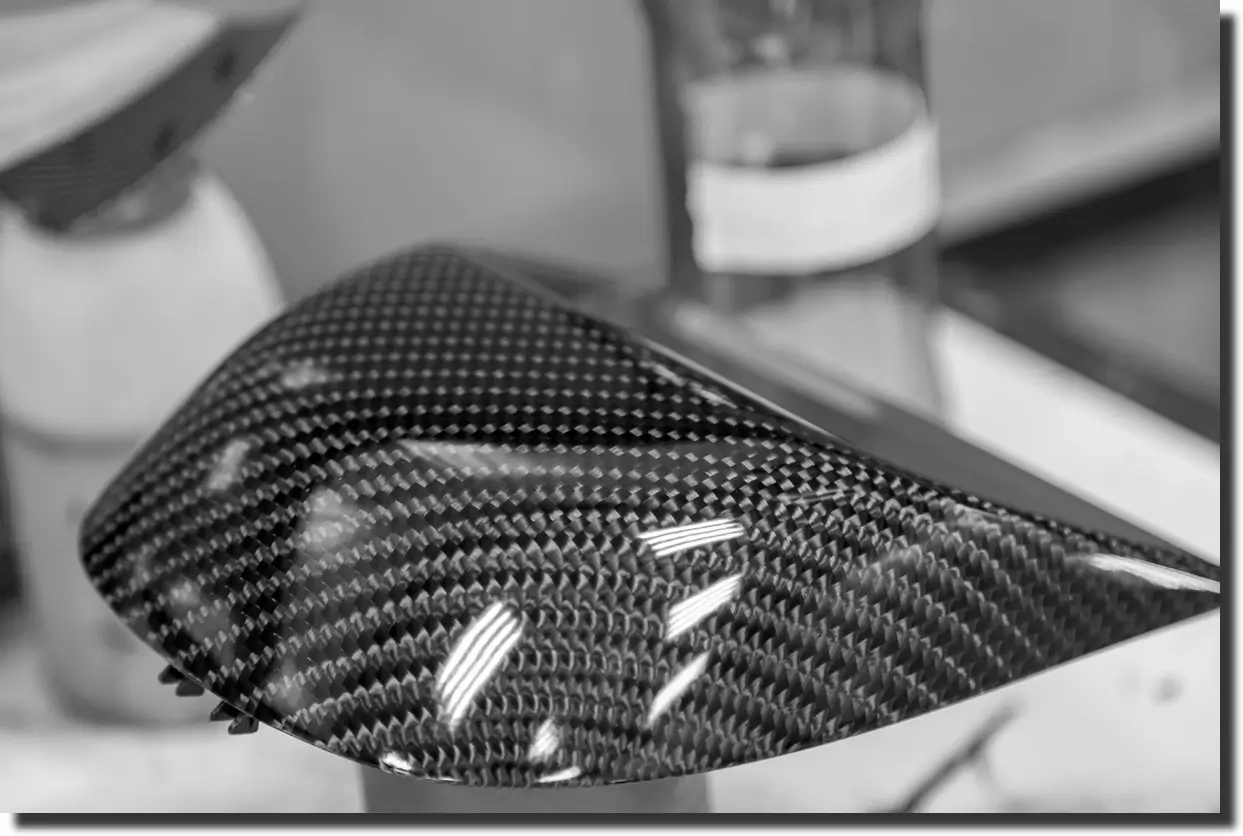At first glance carbon fiber looks like the same woven cloth wherever you see it, yet every program we touch reminds us how different custom carbon fiber parts are from off-the-shelf laminates.
A motorsport team may need a one-off splitter that survives curb strikes; a biotech startup might ask for an X-ray-transparent fixture that weighs almost nothing. When the geometry, resin chemistry, and lay-up sequence are built around a single purpose, the part stops being “just carbon” and starts behaving like a competitive edge.
AMC Composites exists for these one-of-a-kind challenges. Our engineers sit at the same table with designers, run FEA alongside mold planning, and choose the process – prepreg, vacuum infusion, forged, or additive – that gives the lightest, strongest path to meeting the customer's specification.

In a recent study published in the Journal of Materials Engineering and Performance, carbon-fiber-reinforced nylon produced by fused-deposition modeling reached tensile strengths above 34 MPa and flexural strengths near 26 MPa – numbers tuned simply by adjusting layer thickness, raster angle, and infill. That kind of knob-turning is only possible when a part is designed, printed, and tested for one job, not many.
Complex ribs, hidden cable runs, or lattice cores are not practical – or impossible – in metal. With custom lay-ups we steer fibers around tight radii, embed bosses during cure, and finish edges on a five-axis mill without peeling or fray.
Right tool for every industry:
When you choose bespoke composites, you’re not just buying material – you’re locking in geometry, fiber orientation, and inspection criteria that match your exact performance window. That precision is how a prototype becomes a repeatable, production-ready part.
Manufacturing bespoke carbon fiber components begins with choosing the right process for the job. Below is a quick tour of the five methods we rely on most often.

Pre-preg cloth arrives with resin already metered into every filament, giving engineers predictable fiber-to-resin ratios and tight thickness control. After kit-cutting the plies, we lay them into precision machined molds, then autoclave-cure under heat and pressure. The result is aerospace-grade laminate consistency – ideal for the most demanding applications where structural integrity and weight reduction are a key concern.
For larger components spanning greater than 10 feet in length – think marine fairing or SUV roof panel - a resin infusion process is utilized. Once the mold is populated with carbon fiber cloth, the assembly is sealed with a vacuum bag. Air is drawn out, resin is pulled in, and the fiber bed compacts evenly without manual roll-out. Cure temperatures can be tuned lower than in an autoclave, which keeps tooling costs in check for mid-volume production.
Hand-laying dry fabric and brushing in resin is still the fastest way to validate shape, fit, and ergonomics. Because fiber orientation can be adjusted on the fly, designers gain immediate feedback before committing to hard tooling. Low entry cost and rapid iteration make wet layup perfect for concept parts, motorsport spares, or style-approval bucks.
Chopped fiber mixed with resin and pressed in a multi-part die flows into undercuts and deep draws that woven cloth cannot reach. The random fiber orientation creates isotropic strength, while compression pressure drives out voids. For handles, brackets, or sculpted interior trims, custom forged carbon fiber parts provide a distinctive marbled finish and excel at high-volume repeatability.
Continuous-fiber extrusion lets us print stiff spars, jigs, and low-load housings directly from CAD. Layer thickness, raster angle, and infill density can be tuned to hit target flexural or tensile values, then confirmed with mechanical testing. 3D printed carbon-nylon inserts can merge seamlessly with laminated skins.
Together these pathways give project teams the flexibility to chase weight, cost, or lead-time targets – without compromising the performance edge that carbon fiber makes possible.

Creating custom carbon fiber parts is less a single process than a tightly choreographed relay of disciplines. We keep the hand-offs short so ideas move from sketch to shippable hardwa re without expensive detours.
For teams that need a custom carbon fiber parts supplier to own every stage, this closed-loop workflow means fewer emails, faster trials, and a clear audit trail.
Across these fields the application changes, but the advantage stays the same: geometry, fiber orientation, and cure schedule tuned for one job only – yielding lighter, stronger, more repeatable parts than any “off-the-rack” composite could deliver.
Manufacturing custom carbon fiber components designed for performance and longevity starts with proof, not promises. Every critical dimension is captured by CMM and internal lay-ups are sliced virtually with CT, ensuring conformance with the customers specifications.
For aerospace ailerons and track-day splitters alike, this closed-loop regimen means fewer field failures and a clear audit trail.

Carbon fiber’s green value is in its longevity. A lighter part cuts fuel or battery demand every mile, while its corrosion and UV resistance slashes repaint and replacement cycles. Manufacturing waste is tackled too: kit-cut plies nest tightly, forged off-cuts are re-chopped for filler, and autoclave schedules are tuned to minimize energy peaks.
End-of-life recycling options – mechanical shredding for short-fiber mats or pyrolysis for clean threads – are improving yearly, keeping high-grade carbon in circulation instead of landfills.

Use this short checklist when sourcing a custom carbon fiber parts supplier:
When these boxes are ticked, the risk of redesigns, missed ship dates, and costly recalls drops sharply.
Quality carbon composites bridge bold ideas and real-world duty cycles. Rigorous testing locks in reliability, smart material choices trim lifetime emissions, and the right partner streamlines each stage from CAD to crate.
Ready to discuss your project? Whether you need a one-off drone boom or a production run of super-coupe aero panels, custom carbon fiber parts turn ambitious performance targets into tangible, lightweight hardware – built for today and engineered for tomorrow.
.webp)